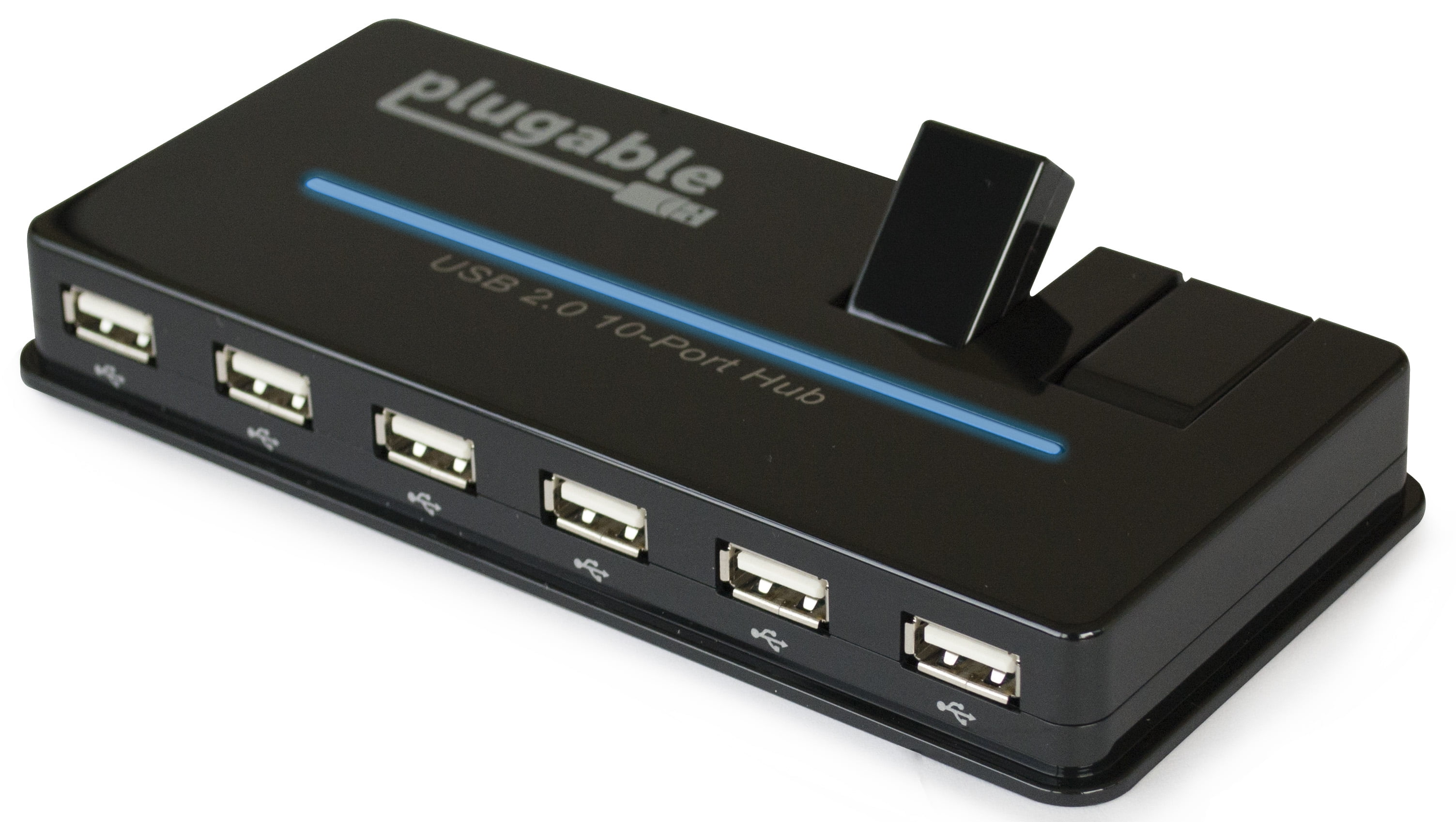HD 4 U Hub: Your Simple Guide To Truly Clear Visuals And Sound
Have you ever wondered what all the fuss about "HD" really means when you're watching a movie or listening to music? It's a question many folks ask, you know, especially with so many new screens and sound systems out there. Well, think of "HD 4 U Hub" as your friendly spot for making sense of it all. We're here to help you get a clearer picture, literally, and better sound too, as a matter of fact, from all your favorite entertainment, today, on .
For a good while now, high definition has been a big part of how we enjoy our media. It's about seeing more detail and hearing richer sounds, which, you know, really changes the whole experience. From your big living room TV to the tiny screen on your phone, getting a handle on what HD offers can make a pretty big difference in how much you enjoy things. So, we're going to break it down, just for you.
This guide is here to walk you through the basics of high definition, whether we're talking about sharp pictures or rich audio. We'll look at what those numbers like "1080P" and "4K" actually mean, and how they affect what you see. We'll also touch on how sound can be so much better with certain tech. It's all about making your entertainment moments more enjoyable, you know, giving you that truly clear view and listen.
Table of Contents
- What is HD, Anyway?
- Seeing It All: Graphics and Display Tech
- Hearing the Difference: High-Definition Audio
- Frequently Asked Questions About HD
- Getting the Most from Your HD Experience
What is HD, Anyway?
So, what exactly does "HD" stand for? Well, it's actually short for HDTV, which means High Definition Television. This term came about to describe a kind of TV that gives you a much clearer picture than older, standard definition sets. When you see a movie online labeled as "HD高清版" (HD High-Definition Version), it basically means that the video came from a high-definition TV source, or, you know, was recorded that way.
The Meaning of HD and HDTV
HDTV, as a matter of fact, is about bringing you a picture that's got more detail and looks more lifelike. It's a pretty big step up from what we used to watch. The goal, you know, is to make the image on your screen look as close as possible to what your eyes see in the real world. This means sharper lines, more vibrant colors, and just an overall more engaging view. It's a bit like comparing a fuzzy drawing to a very detailed painting, so it is.
The whole idea behind HD, and by extension HDTV, is to give you a viewing experience that feels more immersive. When you're watching something in high definition, you can often pick out tiny details you might have missed before, like the texture on a character's clothing or the individual leaves on a tree in the background. It's really about making everything on screen pop, and, you know, feel more present.
- Sophie Rain Spider Man
- Erome P
- Stephanie Abrams Measurements
- Hanalei Swan The 30m Shark Tank Deal She Turned Down Ndash What Happened
- Bill Hemmer Wife
Understanding Resolution: 1080P, 2K, and 4K
When we talk about HD, we often hear numbers like 1080P, 2K, and 4K. These numbers, you know, refer to the "resolution" of the picture, which is basically how many tiny dots, or pixels, make up the image on your screen. A common HD resolution is 1080P. This means the picture has 1080 lines of pixels running horizontally, and each line has 1920 pixels across. So, it's a pretty good amount of detail, you see.
Now, 2K resolution is a bit of a step up from 1080P, offering more pixels and thus, a slightly clearer image. But the big jump, as a matter of fact, comes with 4K. When you see a 4K display, it's often referred to as 2160P, because it has 2160 lines of pixels. This is a huge increase in detail compared to 1080P. For instance, a screen with 1024x768 resolution has 1024 pixels horizontally and 768 lines vertically, so, you can imagine how many more pixels are in 4K.
To give you an idea of the difference, if you're watching an old movie, like, say, Stephen Chow's "Kung Fu," on a 4K TV, you might still only see it in 1080P if that's how it was originally made. Not every old film, you know, has been updated to 4K. But if you have a 4K TV, it's generally best to choose 2160P content when it's available. It really makes a visual difference, you know, especially on a larger screen.
The Ultra HD Standard and What It Takes
For a display or TV to be called "Ultra HD," or "Ultra HD Premium," it has to meet some pretty specific rules set by the CEA (Consumer Electronics Association). First off, the screen needs to have at least 8 million effective pixels. This usually means a resolution of 3840x2160. So, it's a lot of tiny dots making up the picture, you see.
These requirements are there to make sure that when you buy something labeled Ultra HD, you're actually getting a certain level of picture quality. It's not just about having a lot of pixels, though that's a big part of it. The standard also covers other things, like how colors are shown and how bright the screen can get. It's all about making sure you get a truly premium visual experience, which, you know, is what Ultra HD promises.
So, when you're looking at a new TV or monitor, and you see that "Ultra HD" tag, you can be pretty sure it meets these high standards. It's a way for the industry to let you know that you're getting a display that can show incredibly detailed and vibrant pictures. It's a helpful little mark, as a matter of fact, for picking out quality screens.
Seeing It All: Graphics and Display Tech
Beyond just the resolution, how your computer or device handles the picture is also very important. This is where graphics cards come in, whether they're built into your main processor or are separate, more powerful components. They're the ones that actually draw all those pixels on your screen, you know, making sure everything looks smooth and clear.
Intel HD Graphics: A Look at Integrated Options
You might have seen "Intel (R) HD Graphics" listed in your computer's specs. This basically means that your computer uses the graphics chip that's built right into the Intel processor. These are what we often call "integrated graphics." For most everyday tasks, like browsing the web, watching videos, or doing schoolwork, they're perfectly fine. They get the job done, you know, and light up your screen.
However, these integrated graphics are generally considered "entry-level." This means they're not really designed for very demanding tasks, like playing the latest, most graphically intense video games or doing professional video editing. Their performance can change a bit depending on the specific Intel chip you have. For desktop computers, you'll often see "UHD core graphics," which are, you know, similar in their basic function.
For laptops, especially if you're hoping to do more than just basic tasks with integrated graphics, it's worth noting that the "ultra series" core graphics from Intel have gotten much better. They use more power and run at higher speeds. If you're looking for a laptop where the integrated graphics can actually do some heavier lifting, you should probably look for models with good cooling, like the "Xiaoxin Pro," "ThinkBook+," or "Wuwu Pro." Good cooling, you know, helps these chips perform their best.
Making Your Screen Pop with HDR
Another cool feature that makes pictures look amazing is HDR, which stands for High Dynamic Range. What HDR does, in simple terms, is make the very bright parts of the picture brighter and the very dark parts darker, all at the same time. It's about showing more detail in both the highlights and the shadows of an image. So, it's a pretty big deal for visual quality, you know.
Imagine a scene with a bright sky and a shadowy forest. Without HDR, you might lose detail in either the super bright sky or the very dark trees. But with HDR, your screen can show you more of those subtle shades and textures in both areas. The goal, you know, is to make the picture on your screen look much closer to what your own eyes would see if you were actually there, experiencing the scene in person.
This technology really helps to make colors look more vibrant and scenes feel more realistic. It adds a depth to the picture that regular displays just can't quite match. So, if you're looking for the best possible visual experience, a display with good HDR capabilities is definitely something to consider, you know, for that extra pop.
Choosing the Right Display for Your Needs
Picking out a new display, whether it's a monitor or a TV, can feel a bit much with all the options. But, you know, thinking about what you'll use it for can make it simpler. If you're a gamer, for instance, you might care a lot about how smoothly games run. The text mentions the RTX 5050 as a baseline for gaming performance, with average scores from 25 popular games. This kind of data helps you see what a certain graphics card can do at different resolutions like 1080P, 2K, and 4K.
For everyday use, or if you're mostly watching movies, a good 4K TV is a fantastic choice, especially if you pick 2160P content. It really makes a difference. And, you know, the market is always changing, with new products coming out and prices shifting. So, it's a good idea to keep an eye on recommendations that get updated regularly, which, you know, helps you find the best value for your money. You can learn more about display technology on our site, and we often share insights on getting the most from your tech.
Ultimately, the "best" display for you depends on what you value most. Is it the absolute sharpest picture for movies? Or the fastest response time for gaming? Or maybe a good balance of both? Knowing your priorities, you know, helps you narrow down the choices and find a screen that fits your life perfectly.
Hearing the Difference: High-Definition Audio
High definition isn't just for your eyes; it's for your ears too! Just like a clearer picture, high-definition audio means you hear more detail, more depth, and a richer sound from your music, movies, and games. It's about getting closer to the original recording, you know, without losing any of those subtle sounds.
aptX HD and LDAC: Getting Better Wireless Sound
If you use wireless headphones, you might have heard of aptX HD or LDAC. These are special ways, or "codecs," that help send high-quality audio over Bluetooth. Many Bluetooth headphones that use Qualcomm chips support aptX HD. This codec, you know, allows for a much higher data rate, almost double that of standard Bluetooth audio, reaching up to 576kbps. This means a big jump in sound quality, so it does.
The trade-off with aptX HD is that it can sometimes add a little bit of delay, which might be noticeable if you're watching videos and the sound isn't quite in sync with the picture. On the other hand, LDAC is a codec often found in Sony's mid-to-high-end Bluetooth headphones. It also aims to deliver a very high-quality audio experience, trying to keep as much of the original sound detail as possible. Both of these are pretty good ways, you know, to get better sound from your wireless devices.
So, when you're choosing wireless headphones, looking for support for aptX HD or LDAC can really improve your listening experience. It's a bit like upgrading from a standard definition picture to a high-definition one, but for your ears. You'll hear more nuances, clearer instruments, and just a generally richer sound, as a matter of fact.
Audio Formats That Make a Splash
Beyond wireless codecs, there are many different audio formats that come with movies and other media. You might see names like DTS, AC5.1, LPCM, DTS-HD, TrueHD, or even Atmos. These are all different ways that sound is packaged and delivered to your speakers. Some of these, like DTS-HD and TrueHD, are specifically designed for very high-quality, "lossless" audio, meaning they keep all the original sound information.
Dolby Atmos, for instance, is a special kind of audio that creates a more immersive, three-dimensional sound experience. It makes it feel like sounds are coming from all around you, even from above. If a movie has a special Chinese voiceover, you know, that might also be listed as a specific audio track. These formats are all about making the sound experience as rich and detailed as the picture, so it is.
Understanding these audio formats helps you know what kind of sound quality you're getting. If you have a good sound system, choosing content with these higher-quality audio tracks can make a huge difference in how much you enjoy your movies and music. It's all part of that "HD 4 U Hub" idea, you know, making sure you get the best from every part of your entertainment.
Connecting Your Sound Through HDMI
When you connect your devices, like a Blu-ray player or a game console, to your TV or sound system, you'll often use an HDMI cable. HDMI is really good because it can carry both high-definition video and high-definition audio with just one cable. This makes setting things up much simpler, you know, and keeps your entertainment center less cluttered.
If you're trying to get sound from your computer to your TV through HDMI, you might need to do a quick check. You can usually right-click on "This PC" (or "My Computer") on your desktop, then go to "Manage," and then "Device Manager." From there, you'd right-click on "Audio inputs and outputs" and select "Scan for hardware changes." After that, you should see your HDMI connection show up as an audio output option when you click the speaker icon in the bottom right corner. It's a pretty straightforward way, you know, to make sure your sound goes where it needs to.
Using HDMI for both video and audio is a convenient way to ensure you're getting the full high-definition experience. It handles all those complex audio formats we talked about, making sure your sound system gets the best possible signal. So, it's a pretty vital cable, you know, for modern entertainment setups.
Frequently Asked Questions About HD
Many people have similar questions about high definition, so we've gathered a few common ones here to help clear things up. These are the kinds of things folks often ask when they're trying to understand their tech better, as a matter of fact.
1. What's the real difference between HD and 4K?
Well, the main difference is the number of pixels on the screen, so it is. HD, particularly 1080P, has a resolution of 1920x1080 pixels. 4K, which is often called 2160P, has 3840x2160 pixels. That's four times as many pixels as 1080P. This means 4K pictures are much, much sharper and show a lot more detail, especially on larger screens. It's a pretty big jump in visual clarity, you know, making everything look more lifelike.
2. Can my old computer handle HD content?
It really depends on how old your computer is and what kind of HD content you want to handle. For basic HD videos (like 720P or 1080P), most computers from the last decade or so can play them just fine, especially if they have some form of integrated graphics. However, if you're trying to play 4K videos or demanding games, an older computer with basic Intel HD Graphics might struggle. You'll need a more capable graphics card, either dedicated or a newer, more powerful integrated one, to get a smooth experience. So, it's not always a yes or no answer, you see.
3. How do I get better audio quality for my HD videos?
To get better audio quality, there are a few things you can do. First, make sure the video file itself has high-quality audio tracks, like DTS-HD, TrueHD, or Atmos. Second, use a good audio system, like a soundbar or a home theater receiver with decent speakers. Third, ensure your connections are solid, like using an HDMI cable to send the audio from your player to your sound system. And if you're using wireless headphones, consider ones that support aptX HD or LDAC codecs. All these things, you know, contribute to a much richer sound experience.
Getting the Most from Your HD Experience
Getting the most out of your high-definition content, whether it's for visuals or sound, is really about understanding the different parts that make up the experience. From the number of pixels on your screen to the way sound travels to your ears, each piece plays a role. It's about knowing what those terms like 4K, HDR, and aptX HD mean for you, the person watching or listening.
So, when you're thinking about upgrading your TV, your computer, or even your headphones, remember what we've talked about. Look for those higher resolutions if picture quality is key, and check for features like HDR to make your visuals truly pop. For audio, consider the codecs and formats that deliver a richer, more detailed sound. It's all about making your entertainment truly shine, as a matter of fact, and getting the most enjoyment from every moment.

Discover The Best Of Entertainment With HD Hub 4 U .com

HD Hub 4 U Movie: Your Ultimate Guide To Streaming Movies Online

HD Hub 4 U: Your Ultimate Guide To Streaming And Downloading High